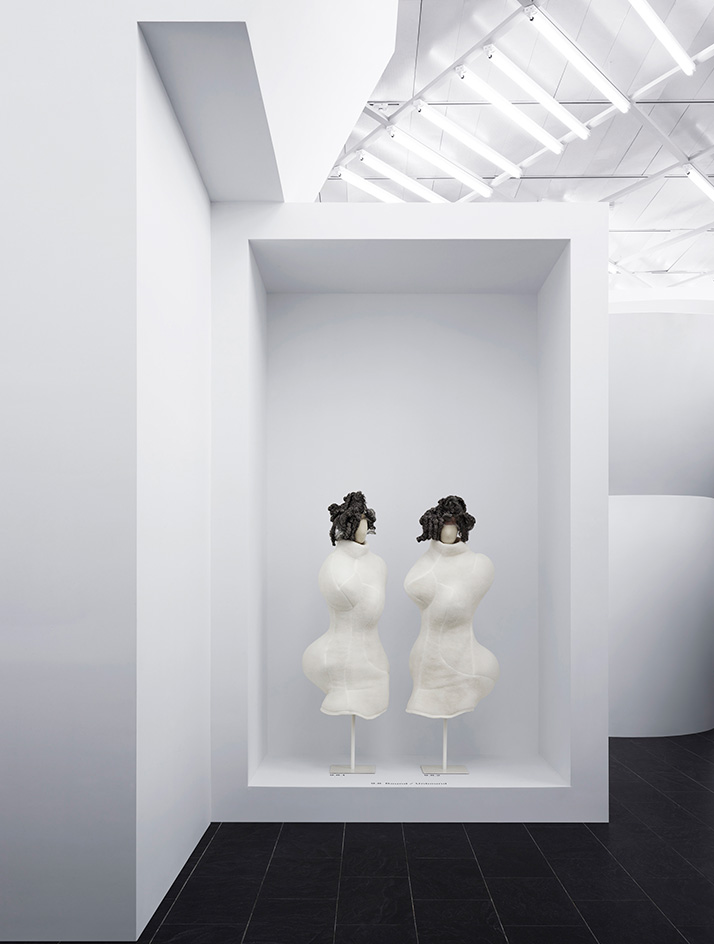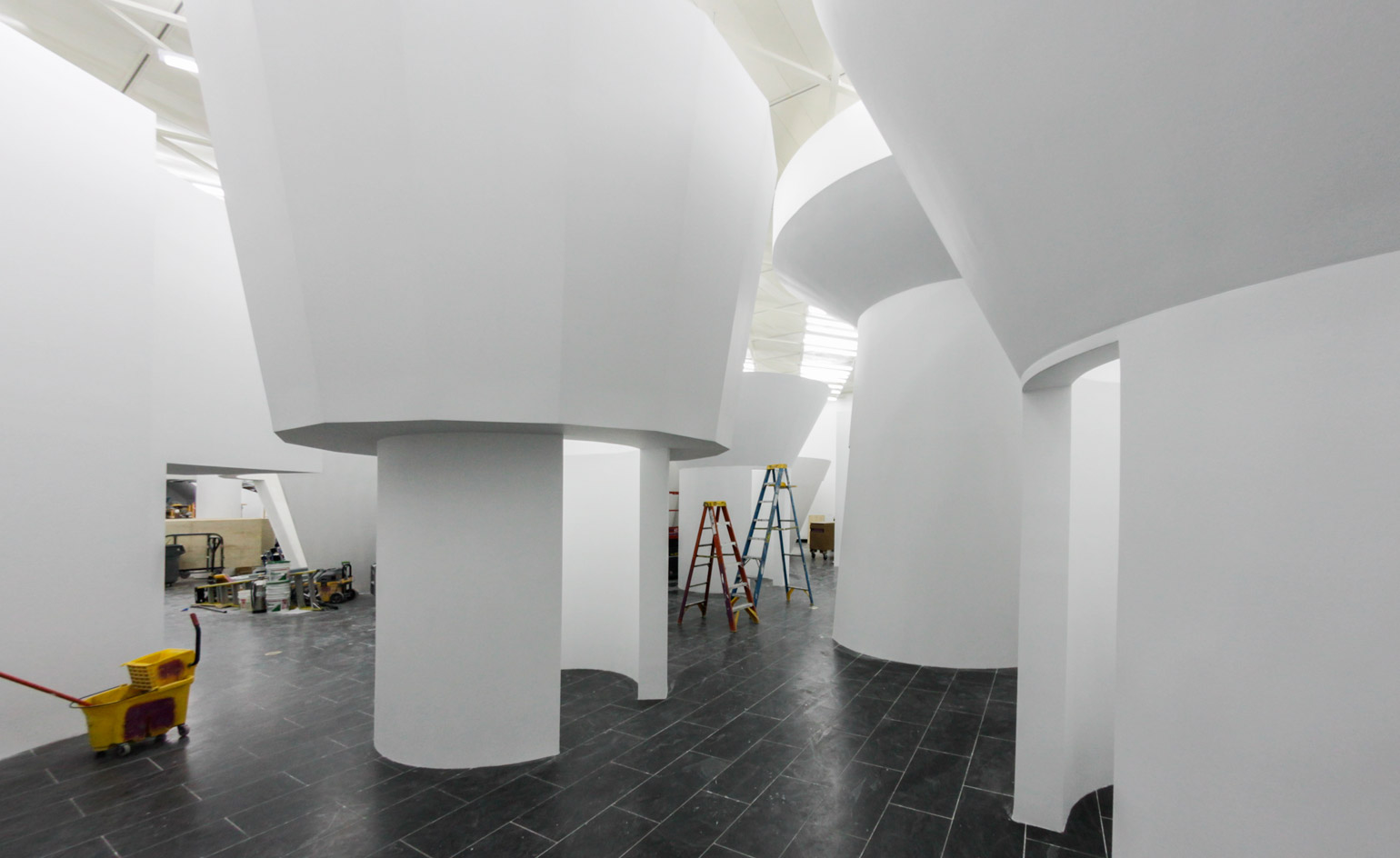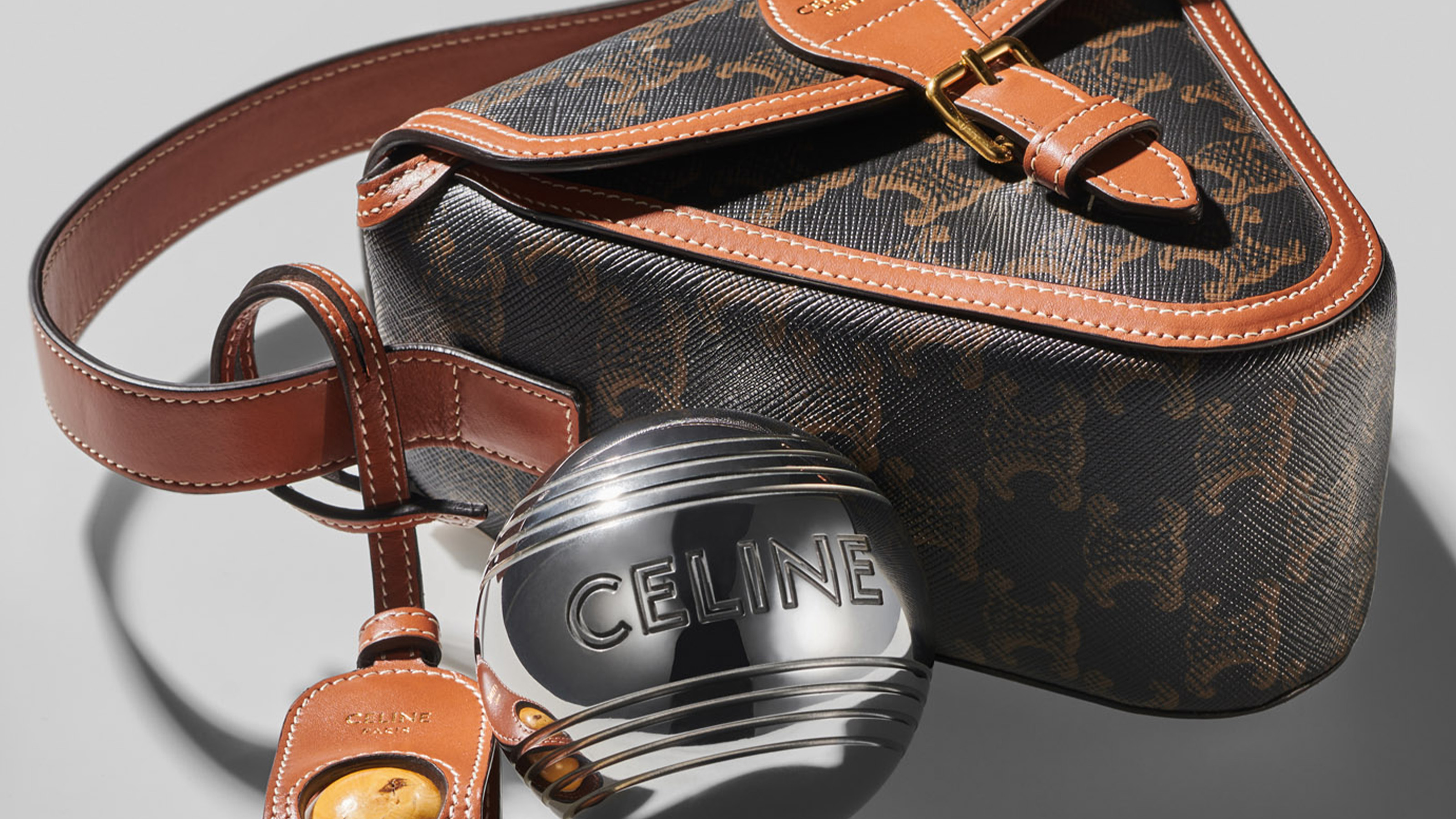Cutting room: behind the scenes of Rei Kawakubo’s Met Fifth Avenue show

This summer, the work of Rei Kawakubo, founder and creative director of Comme des Garçons, is the subject of an exhibition at the Costume Institute of New York’s Metropolitan Museum of Art. Both Kawakubo and the curator in charge, Andrew Bolton, insist the show is not a retrospective – though that would certainly be Kawakubo’s due.
The last exhibition at The Met dedicated to a living fashion designer was in 1983, when Diana Vreeland, former editor-in-chief of US Vogue, staged a show exploring the work of Yves Saint Laurent, believed then and now to be one of the 20th century’s greatest. Two years earlier, in 1981, Kawakubo made her debut at Paris Fashion Week, presenting collections that radically reconsidered conventions of dressing, dressmaking and fashion as a whole. They were revered by few, reviled by many. Today, they seem uncannily prescient: a new way of looking at fashion, of embedding concepts, of cutting garments flat rather than tailoring them to the body. These clothes had a different form, a different look and a different intent.
Now 74 and still creating, Kawakubo is possibly the most important fashion designer of our age. One of the most radical things about her work is the fact that, in her eyes, much of her recent output hasn’t been fashion at all. Her past eight collections, starting with S/S 2014, have been described by the designer herself as ‘not clothes’. The S/S14 show was labelled ‘objects for the body’, which sounds like a synonym for clothes but is apt to describe pieces that more readily resemble soft sculpture than, say, a cocktail dress. Rather than surrendering to a visual effect, they seem to express an interest in space, in dimensionality.
A Comme des Garçons dress is frequently so multi-layered and complex, so structurally intricate, that it is more than merely 3D in a world of 2D fashion. Perhaps the fourth dimension to these pieces is an inner one – an exploration of soft engineering. How is the waist held? Where does your arm go? How does it feel? You have to be inside these ‘not clothes’ to truly understand the architecture of the spaces Kawakubo has designed. Her latest design, however, is on a vast scale.

Installation view of ‘Clothes/Not Clothes: Bound/Unbound’. for the exhibition album, available exclusively at The Met Store from late May
The extraordinary exhibition space of the Costume Institute show has been devised by Kawakubo – a concept presented, complete, to Bolton eight months ago, after her S/S17 womenswear show in Paris. The exhibition design doesn’t look like a giant dress, but it kind of is. ‘It is the same, intricately connected,’ says Kawakubo via email (she hates interviews and seldom conducts them, even more rarely in person). ‘The same aims deriving from the same sense of values – that is creation. In other words, always something new. I didn’t want it to look like a museum exhibition.’
It doesn’t. The expanse of The Met Fifth Avenue’s Iris and B Gerald Cantor Exhibition Hall has been carved into niches, nooks and crannies, with walls deliberately thrown up to split the space apart. The overall effect is both cosy and confused, intimate and intricate. ‘It is a massive white space of structures and sculptures, which lead the public on a voyage of discovery,’ says Kawakubo.
There is undoubtedly a sense of journeying through her labyrinthine design: the sections overlap and intermingle, with straight lines and curves jostling one another in seeming disorder. This collection of structures resembles a dystopian cityscape. Inside the different spaces, visitors will encounter around 150 examples of Kawakubo’s work produced over the past 40 years.
Her recent ‘not clothes’ are strongly represented. According to Bolton, Kawakubo originally wanted the exhibition to present pieces only from those eight collections, and he had to fight to include earlier examples. The exhibition design itself sits easily alongside Kawakubo’s recent work, as another piece of non-clothing for people to inhabit. ‘It’s an environment,’ the designer says. ‘It is intricately linked. It is not a backdrop.’ (She replied entirely in block capitals to my emailed questions; the emphasis is mine.)
‘I feel as if that spatial awareness of the body, and that spatial awareness of the body within space, is incredibly important,’ says Bolton. He’s speaking on the phone from New York in the final days of the exhibition installation. ‘Even the early work emphasises the void between the body and the dress. She developed that void by lowering the boundary where the body starts and the clothing begins.’ Boundaries don’t interest Kawakubo.
When asked if she was conscious of rules about the display of clothes in museum exhibitions – sight lines, glass, the conventions of labelling – her answer was brief: ‘I never adhere to any rules.’ The space itself, Bolton explains, is entirely free of exhibition markings or descriptions. There is a booklet to guide viewers, should they so wish, but otherwise their voyage is without overt navigation.

The installation 43 days into construction.
‘It’s a completely white space, with the clothes,’ Bolton says. ‘You have the option to walk in and experience without interpretation.’ The lighting, devised by Thierry Dreyfus, who also produces and designs the lighting for Comme des Garçons’ Paris fashion shows, was deliberately intended to eradicate shadows and give the impression of… nothingness.
The Japanese word mu can mean emptiness, without, or merely nothing. It’s an important concept for Kawakubo. Her reluctance to be interviewed reflects a reticence to over-explain her work. Backstage after her fashion shows, rather than the sermons offered by other designers, Kawakubo summarises her collections with neat elliptical phrases, or even single words: blood and roses, the future of silhouette, crush. Speaking to The Independent in 1995, she stated: ‘The meaning is that there is no meaning.’
The designer resists Bolton’s interpretations – or, at least, declares them to be his and not hers. ‘I was reminded of Susan Sontag’s essay “Against Interpretation”,’ says Bolton. ‘Sontag basically says that intellect is the critic’s revenge on art, that the critic can’t do art so they talk about it instead. The idea of subjectivity as opposed to objectivity, emotion versus intellect.’ Kawakubo echoes that: ‘I don’t have reference points.’ She has approached the exhibition design in the same manner as her clothing. ‘Energy, stimulation, new beauty’ are the words she uses to express what she wants viewers to feel when exploring the space.
That space is, of course, her space. Having a living fashion designer – or artist, or anyone – directly involved in the curation and display of their work is generally problematic. A curator will have one perspective, a designer another. In this instance, the exhibition design was devised by Kawakubo in collaboration with Bolton and constructed by the Met. There is no outside interference – the vision is pure. ‘She was very adamant, and I was very adamant, that it would be just the museum and Rei,’ says Bolton. ‘There’s such a profound connection between our clothes and the environments in which they’re shown. I actually encourage that collaborative effort.’
The collaboration here, though, was something of a dance, with Kawakubo conceiving the architecture, Bolton curating the designs, and those elements being brought together in a space envisaged as a distinct creative endeavour. ‘Usually, how I work is that you have the curation and you work with a design concept that works around the curation. This is almost the opposite,’ says Bolton. Kawakubo, as always, avoids easy categorisation: ‘I like not to think of borders and definitions in my work.’
As originally featured in the June 2017 issue of Wallpaper* (W*219)

A rendering of the architectural installation that carves the exhibition hall into a multitude of spaces

Left, Thierry Dreyfus' lighting design for the exhibition is intended to eradicate shadows and give the impression of nothingness. Right, Andrew Bolton, curator in charge of The Met's Costume Institute, photographed for Wallpaper* at the exhibition space on 18 April.

Day 30 of construction in The Met's Iris and B Gerald Cantor Exhibition Hall.

Day 37 of construction in The Met's Iris and B Gerald Cantor Exhibition Hall.

Day 43 of construction in The Met's Iris and B Gerald Cantor Exhibition Hall.

Left, installation view of 'Design/Not Design'. Right, installation view of 'Clothes/Not Clothes'. for the exhibition album, available exclusively at The Met Store from late May

Installation view of 'Object/Subject'. for the exhibition album, available exclusively at The Met Store from late May
INFORMATION
‘Rei Kawakubo/Comme des Garçons: Art of the In-Between’ is on view until 4 September. The exhibition catalogue is now available, featuring photography of Kawakubo’s womenswear by the likes of Nicholas Alan Cope, Inez and Vinoodh, Craig McDean, Brigitte Niedermair and Paolo Roversi. A separate limited-edition exhibition album, with installation photography by Nicholas Alan Cope and commentary by Mark Wigley, is available at The Met Store from late May. For more information, visit The Met Fifth Avenue website
ADDRESS
The Met Fifth Avenue
1000 Fifth Avenue
New York NY 10028
Wallpaper* Newsletter
Receive our daily digest of inspiration, escapism and design stories from around the world direct to your inbox.
-
 Put these emerging artists on your radar
Put these emerging artists on your radarThis crop of six new talents is poised to shake up the art world. Get to know them now
By Tianna Williams
-
 Dining at Pyrá feels like a Mediterranean kiss on both cheeks
Dining at Pyrá feels like a Mediterranean kiss on both cheeksDesigned by House of Dré, this Lonsdale Road addition dishes up an enticing fusion of Greek and Spanish cooking
By Sofia de la Cruz
-
 Creased, crumpled: S/S 2025 menswear is about clothes that have ‘lived a life’
Creased, crumpled: S/S 2025 menswear is about clothes that have ‘lived a life’The S/S 2025 menswear collections see designers embrace the creased and the crumpled, conjuring a mood of laidback languor that ran through the season – captured here by photographer Steve Harnacke and stylist Nicola Neri for Wallpaper*
By Jack Moss
-
 Met Gala 2025 and ‘Superfine: Tailoring Black Style’ exhibition: everything we know so far
Met Gala 2025 and ‘Superfine: Tailoring Black Style’ exhibition: everything we know so farEverything Wallpaper* knows about the Met Gala 2025 so far – from the just-revealed dress code to the exhibition theme and A-list co-chairs
By Anna Solomon
-
 Summer games, from pétanque to pool floats, get a fashionable spin
Summer games, from pétanque to pool floats, get a fashionable spinFrom a luxurious pétanque set to pool floats and playing cards, summer games and toys from the world’s best-known fashion houses
By Jack Moss
-
 Paris Fashion Week A/W 2022: Chanel to Miu Miu
Paris Fashion Week A/W 2022: Chanel to Miu MiuIn this extended report, Wallpaper* updates you live from Paris Fashion Week A/W 2022 shows, with rolling coverage as runway events unfold
By Jack Moss
-
 Sarah Moon brings painterly fashion and dark fantasy to Fotografiska New York
Sarah Moon brings painterly fashion and dark fantasy to Fotografiska New YorkOctogenarian French photographer and filmmaker Sarah Moon shows 30 years of work at Fotografiska New York – spanning fashion and fantasy, mystery and the macabre, it’s dark, painterly and compelling
By Pei-Ru Keh
-
 Scene-stealing runway sets from S/S 2022 womenswear shows
Scene-stealing runway sets from S/S 2022 womenswear showsFrom giant roulette wheels to Olympic diving boards and multi-city synchronized extravaganzas – our pick of the best fashion show sets from S/S 2022 womenswear
By Laura Hawkins
-
 Paris Fashion Week S/S 2022: Loewe to Chanel
Paris Fashion Week S/S 2022: Loewe to ChanelFashion Week returns to form in the French capital. Here is everything you need to know about Paris Fashion Week S/S 2022
By Laura Hawkins
-
 ‘In America: A Lexicon of American Fashion' is coming to The Met
‘In America: A Lexicon of American Fashion' is coming to The MetThe first of a two-part, year-long extravaganza, ‘In America: A Lexicon of American Fashion’ is organised into 12 sections that seek to define the emotional qualities in American style
By Pei-Ru Keh
-
 Doug Aitken creates reflective artwork for Saint Laurent in Venice
Doug Aitken creates reflective artwork for Saint Laurent in VeniceFor the Saint Laurent S/S 2022 show, the brand’s first physical catwalk presentation since the Covid-19 pandemic began, American artist Doug Aitken created the living artwork Green Lens, on Venice's Isola della Certosa
By Laura Hawkins